Expo 2020 Dubai
The Dubai Expo has officially opened with pavilions designed by architects including Foster + Partners, WOHA, and Santiago Calatrava. One of the world’s biggest events which have started after being postponed last year owing to the COVID-19 pandemic worldwide. The Expo Dubai is scheduled from 1st October 2021 to 31st March 2022. In spite of the postponement, the 2020 branding will be retained by the Expo organizers for marketing purposes. This World Expo was planned after Dubai was named as the host on 27th November 2013, by the BIE (Bureau International des Expositions) at its Paris general assembly.
It will be the first-ever Expo in the MEASA region, covering Africa and the Middle East. People from 190+ countries will take part in the event. The event will cover a whopping 4.38 kilometers in Dubai South, near the Al Maktoum International Airport. The theme of this year’s Expo 2021 Dubai is Connecting Minds, Creating the Future. The sub-themes are Sustainability, Opportunity, and Mobility.
The areas under focus for the Sustainability segment are industries, financial capital, governance, employment, and education. Mobility will focus on filling up the gap between developed areas and those which require administrative and technological intervention. Opportunity will focus on highlighting sectors and companies adhering to the central theme and tapping new opportunities.
There are the 10 must-see pavilions
India Pavilion by Dikshu C. Kukreja
India Pavilion at Expo 2020 Dubai offers a digital recreation of India’s past, present and future. Located in the Al Forsan area, the pavilion takes visitors on a journey, presenting the country as a global power through its ‘Five Ts’ — talent, trade, tradition, tourism and technology. As you enter the India pavilion at the Dubai Expo 2020, you can see miniature models of the Ram Mandir to be built at Ayodhya and the under-construction Hindu temple in Abu Dhabi, the first such in the city. The UAE has allowed India to build a permanent pavilion over 40,000 sq. ft, a privilege given to a handful friendly countries. Dikshu C. Kukreja, managing principal architect of C.P. Kukreja Architects, who designed India’s pavilion, said he developed 82 designs. The final design was selected after consultations with government officials to arrive at a design for the façade that is kinetic and can keep rotating to showcase India’s complex but unique stories. “We have used recycled aluminium metal boxes for the façade. We also have given a lot of focus on sustainability and have made a design that is as energy efficient as possible. In Dubai, you see a lot of glass buildings. I thought that is not the solution for this kind of a hot and humid climate. That’s why we have created an environment-friendly design that will not have such high demand of energy,” he said.
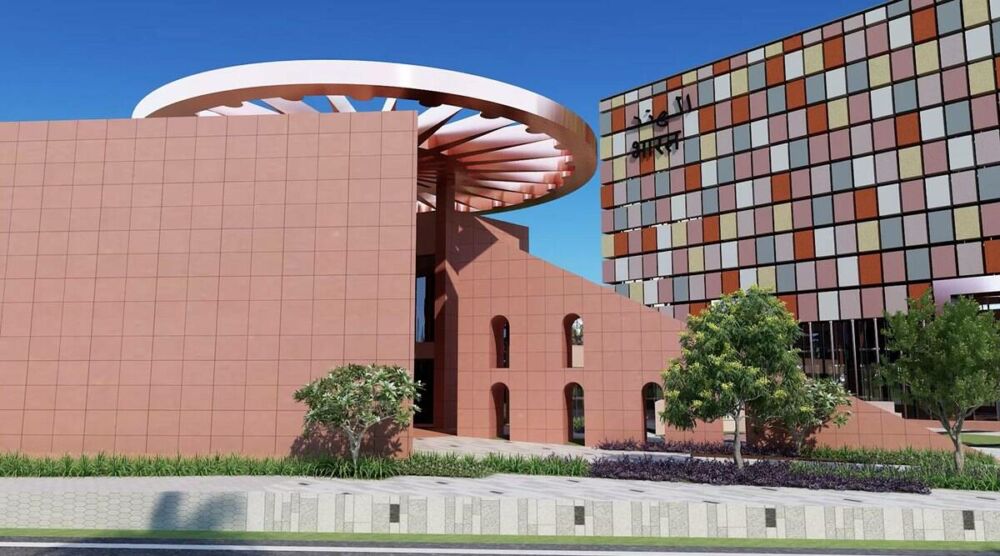
UAE Pavilion by Santiago Calatrava
Designed by Spanish architect Santiago Calatrava, the host nation’s pavilion was informed by the shape of a falcon’s wing. The building is topped with 28 carbon fibre “wings” that can be closed to shelter the roof solar panels.
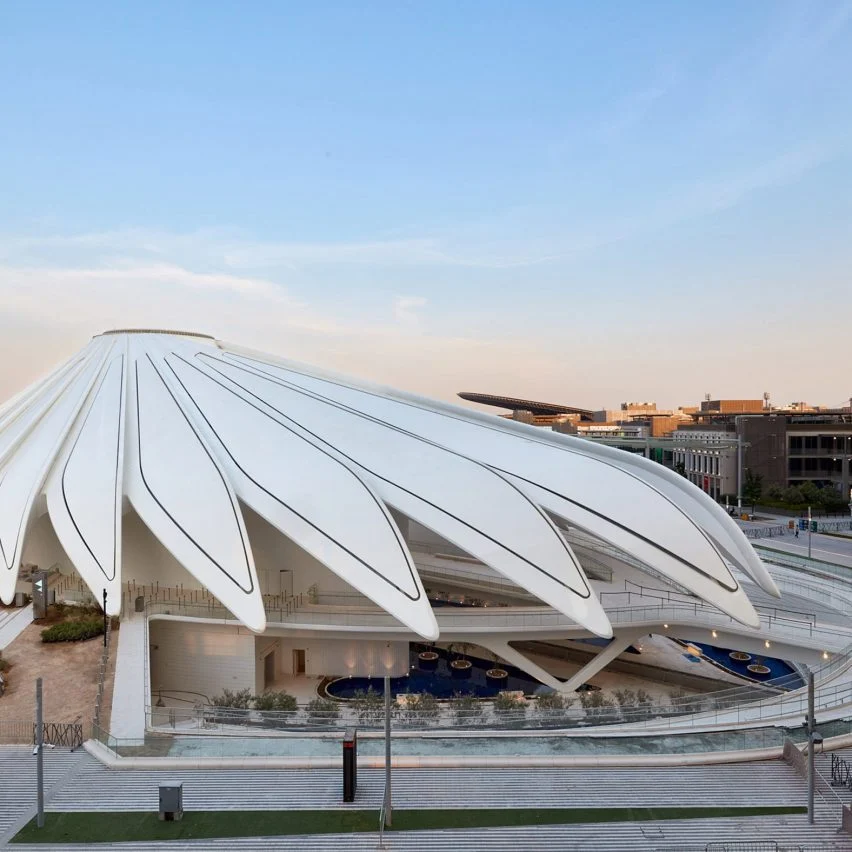
Singapore Pavilion by WOHA
Singapore studio WOHA created a plant-filled pavilion for the country’s pavilion at the expo. Described by the studio as a “three-dimensional garden”, the building has a series of raised walkways that wrap around three plant-covered cones.
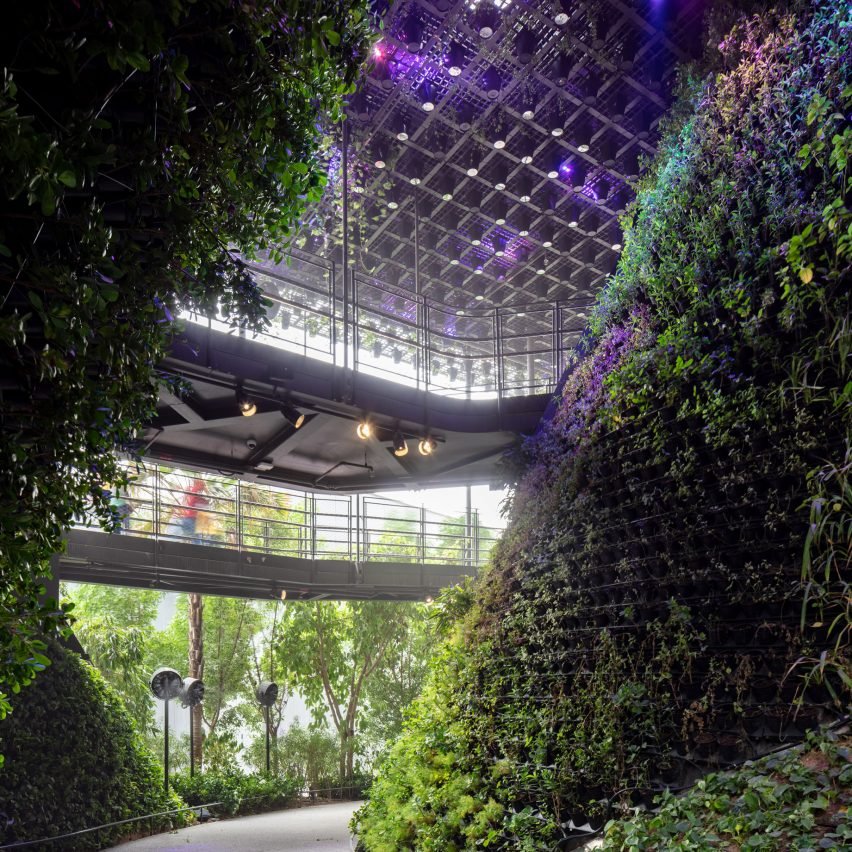
Finland Pavilion by JKMM
The Finland Pavilion was built around a calm, timber-lined space where people can escape the bustle of the expo. Designed by Helsinki studio JKMM Architects, the pavilion was covered in a white tensioned industrial fabric to evoke the appearance of Finnish snow.
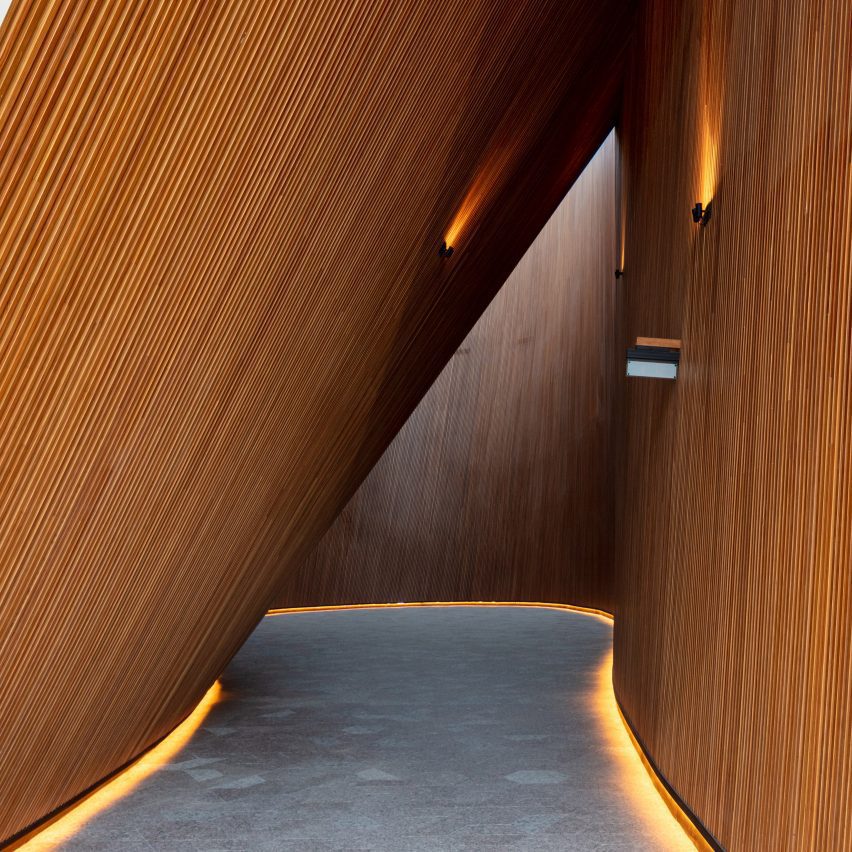
UK Pavilion by Es Devlin
The UK’s contribution to the expo is a cone-shaped cross-laminated timber pavilion created by British designer Es Devlin. It was designed to display an AI-generated poem across its facade.
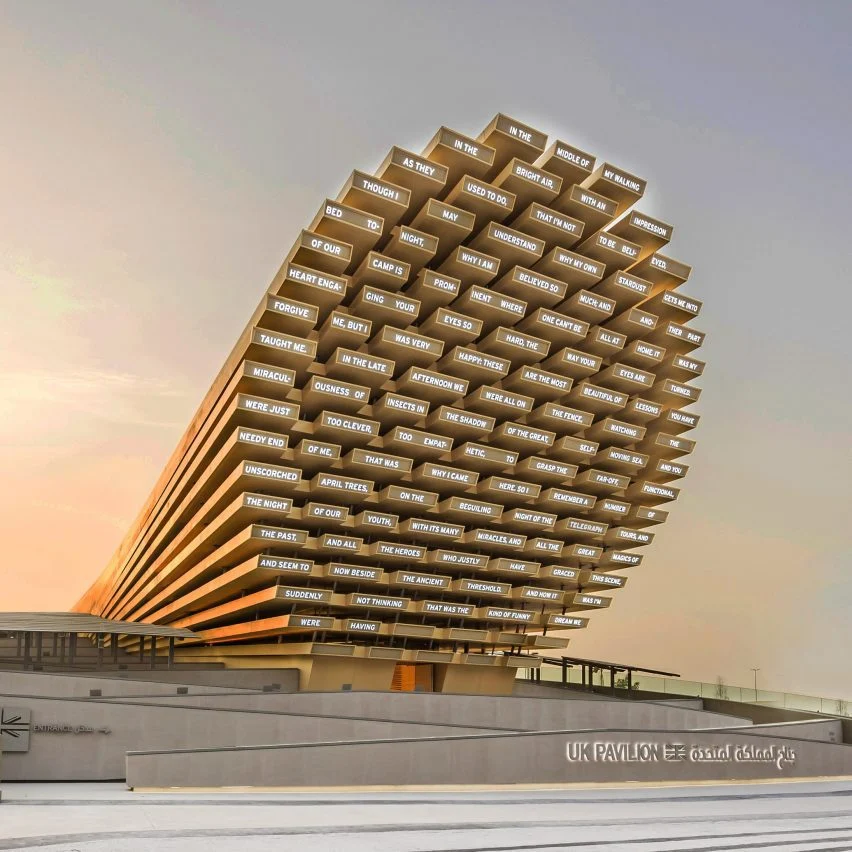
Mobility Pavilion by Foster + Partners
This trefoil-shaped pavilion, designed by UK studio Foster + Partners, anchors the expo’s mobility district. Each of the building’s three cantilevered forms contains a gallery with an immersive exhibition designed by London-based design consultancy MET Studio.
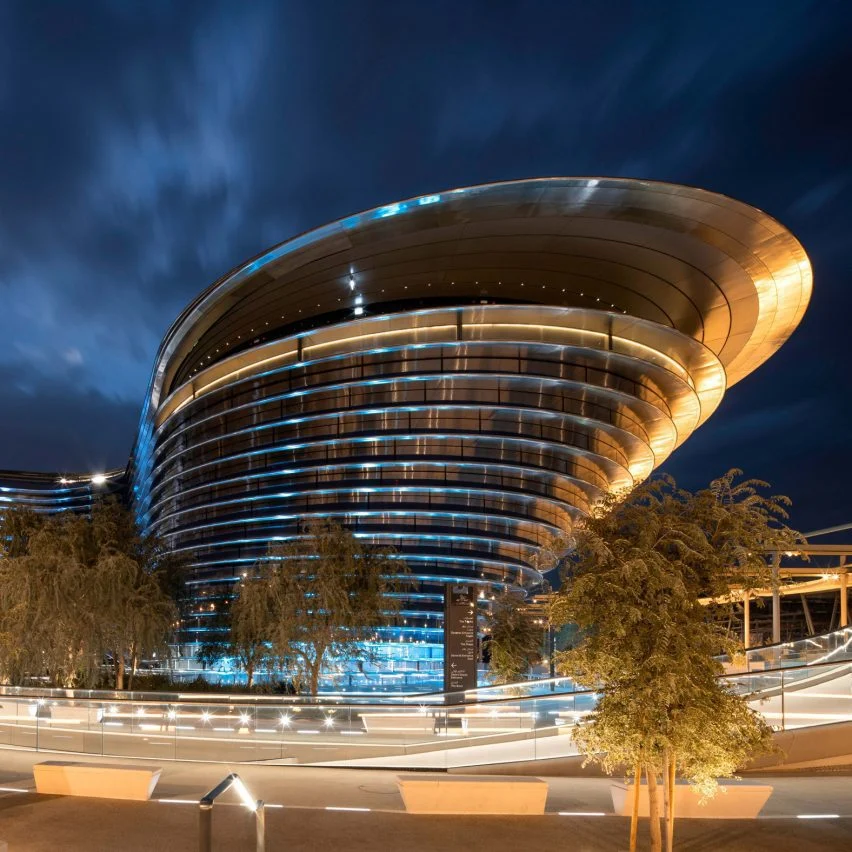
Swiss Pavilion by OSS
The attention-grabbing Swiss Pavilion has a facade that acts as a giant mirror, which reflects the giant red entrance carpet. Named Reflections, the pavilion was designed by Zürich-based architecture studio OOS to make visitors reflect on the image of Switzerland.
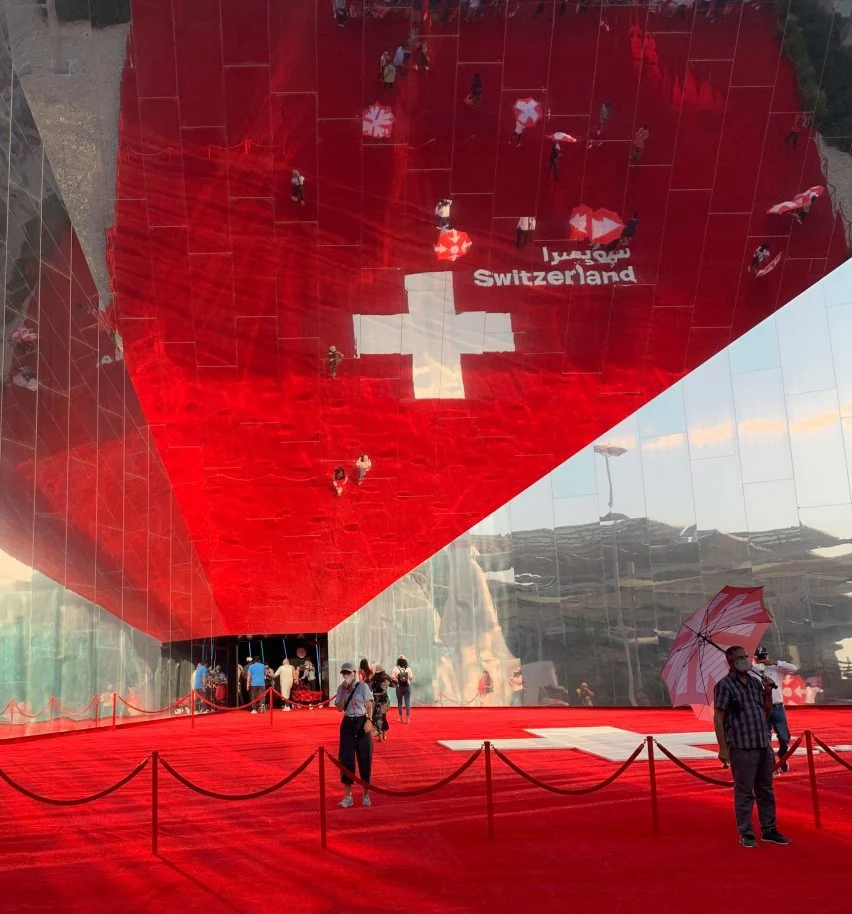
Sustainability Pavilion by Grimshaw
Anchoring the sustainability district, the Sustainability Pavilion was designed to generate all of its own water and energy. UK studio Grimshaw topped the pavilion with a 135-metre-wide, solar-panel-covered canopy.
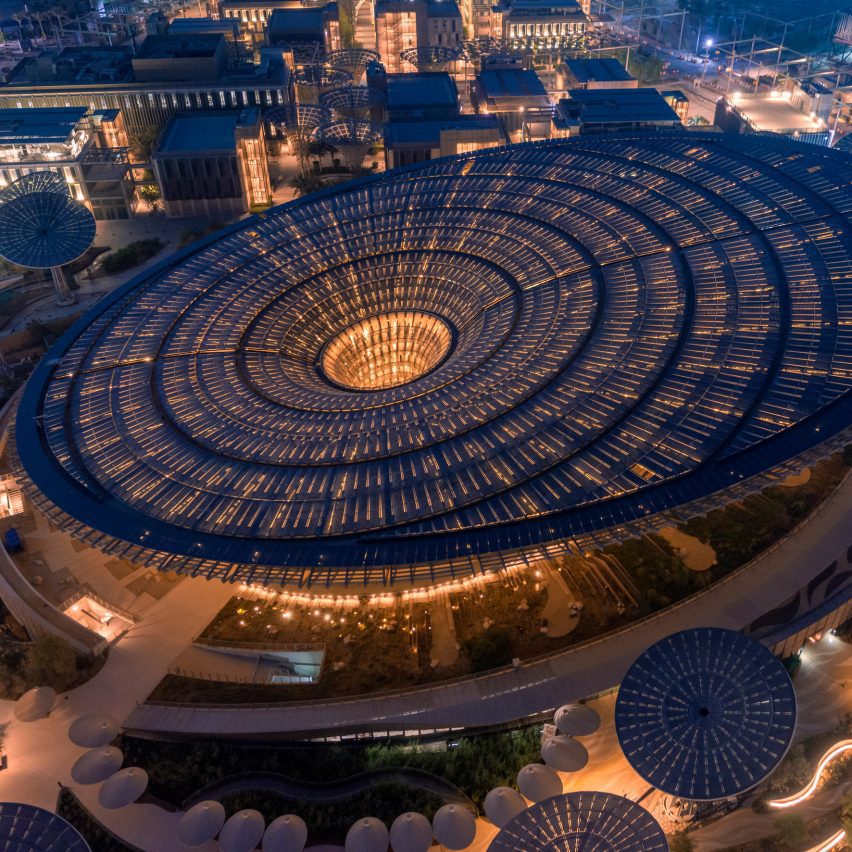
Dutch Pavilion by V8 Architects
Also located in the sustainability district, the Dutch Biotope pavilion was built around an 18-metre-high “food cone” covered with edible plants. The pavilion is topped with colourful solar panels for power and extracts water from the desert air to irrigate the plants.
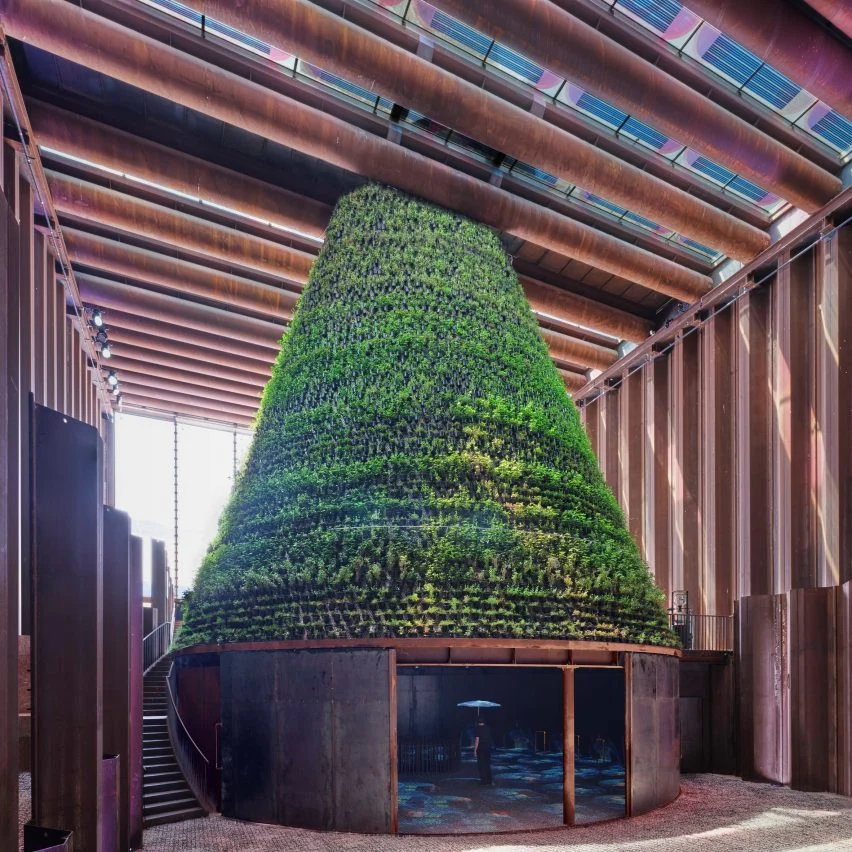
Opportunity Pavilion by AGi Architects
Spanish-Kuwaiti studio AGi Architects designed the main pavilion in the opportunity district. Named Mission Possible, the building was built around a covered plaza.
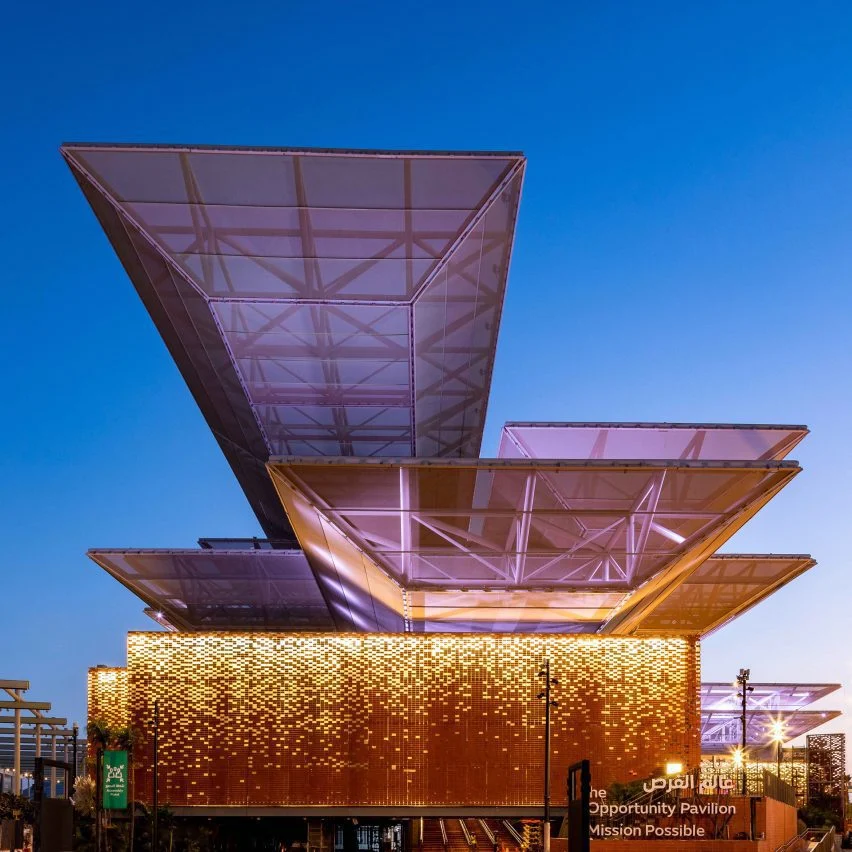




GIPHY App Key not set. Please check settings